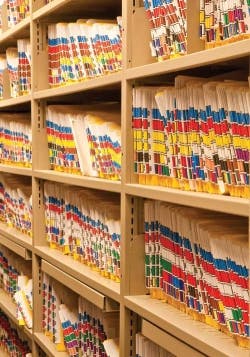by Teresa Duncan, MS
The new set of dental codes become active Jan. 1, 2011, and will be effective until Dec. 31, 2012. The Code Revision Committee will meet regularly during the two-year interim to consider additions, changes, and deletions to the Current Dental Terminology (CDT) code set. Let's review a selection of the new and revised codes that will be most applicable to the general practice. It is worth noting that no codes were deleted during this update to the CDT code set.
What does the new code set mean for your hygiene service mix? Additions include many treatment codes, but just a few codes that apply to services provided by preventive care specialists. Since many hygienists also enter treatment plans, knowledge of these updated and new codes will be essential.
Hygiene-related codes
D0486 – (REVISED) Accession of transepithelial cytologic sample, microscopic examination, preparation, and transmission of written report.
This code used to reference "brush biopsy" directly. All references to that particular method have been removed. The description reads "Pathological analysis, and written report of findings, of cytologic sample of disaggregated transepithelial cells." It is still laboratory-related. If you are using a brush biopsy method for oral cancer screening, then continue to use D7288.
D1352 – (NEW) Preventive resin restoration in a moderate to high caries risk patient – permanent tooth.
This code is ideal to arrest caries before it reaches the dentin. It is meant for placing composite material in a cavitated lesion and includes placing sealant material in radiating fissures and pits.
D9215 – (NEW) Local anesthesia in conjunction with operative or surgical procedures.
Although this code has been added, it does not guarantee that it will be covered. Most insurance plans do not allow benefits for anesthesia.
Treatment-related codes
D2940 – (REVISED) Protective restoration.
Clarification of the code shows that it is not to be used to describe placement of endodontic access closure. It is meant as a healing or protective step – not a final placement of liner or base.
D6055 – (REVISED) Connecting bar – implant supported or abutment supported.
For those who record implant treatment plans, you can now select this code even if the prosthetic is connected to an abutment. Previously it only specified connection to an implant.
D6254 (NEW) Interim pontic and D6795 (NEW) Interim retainer crown.
Both codes are intended to be used for interim placement of less than six months and when a final impression was not taken. They are not meant to be used to report fabrication of a temporary pontic or crown while waiting for the final product to be delivered.
D7953 (REVISED) Bone replacement graft for ridge preservation – per site.
Revision adds "implant removal" to the descriptor. The code is meant to describe addition of bone to this site after either a tooth or implant is removed. Membrane placement and extraction (of either tooth or implant) are still coded separately.
Reminder
Bear in mind that this is not an exhaustive list of the additions and revisions to the CDT code set, but a review of the changes that may impact you the most. Please contact your practice-management software company to ask if an upgrade or "patch" is available that will integrate these changes into your software. The ADA offers a "Practical Guide to the Dental Procedure Codes" along with a "CDT Companion Guide" that many offices will find helpful. Visit ada.org for more information.
With more than 20 years of health-care experience, Teresa Duncan addresses topics such as insurance coding, accounts receivable, and practice revenue growth. She is a Fellow and educator for the Association of Dental Implant Auxiliaries and a Fellow of the American Association of Dental Office Managers. She consults regularly with practices to improve their coding and collections process. Visit www.OdysseyMgmt.com for more information about her courses and consulting. You can also visit Teresa's blog at http://www.thedentalimplantblog.com.
Past RDH Issues







